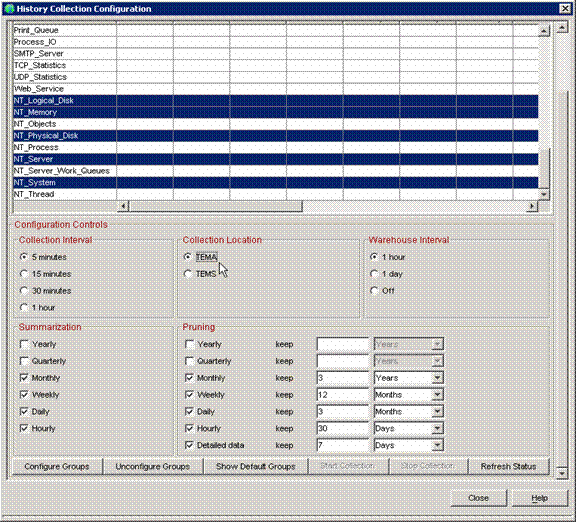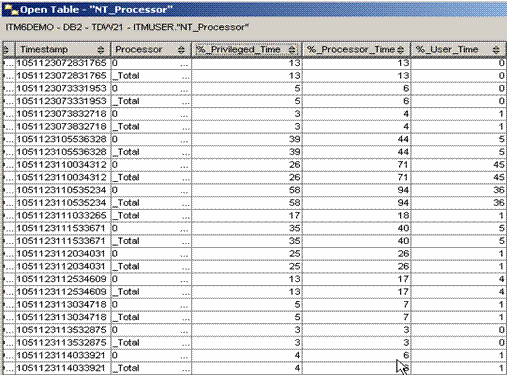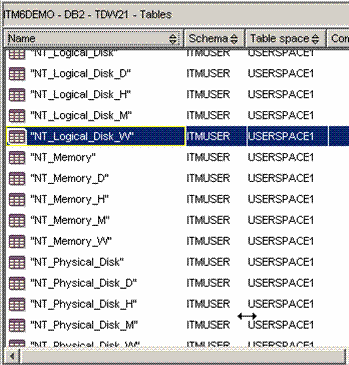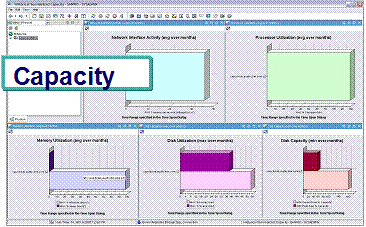| Tool Mentor: TDW - Monitor, Analyze, and Report Capacity Usage |
 |
|
ContextTool mentors explain how a tool can perform tasks, which are part of ITUP processes and activities. The tasks are listed as Related Elements in the Relationships section. You can see the details of how processes and activities are supported by this tool mentor, by clicking the links next to the icons: DetailsThe new Tivoli® Data Warehouse (TDW), an optional component of the Tivoli Enterprise Portal (TEP) platform and the next warehousing step beyond TDW 1.3, stores metric information from monitored IT assets. Metrics captured from the various Tivoli Enterprise Management Agents (TEMA) are stored in TDW. This information can be utilized to monitor, analyze and report capacity usage using capacity management tools to access the information. These tools can be any capacity planning product that works with a relational database. TEP workspaces can also be utilized to serve basic capacity planning tasks by using views to monitor, analyze and report capacity usage. Collecting DataTDW uses TEMAs associated with monitoring products to collect information as well as Universal Agents (UA) for collecting custom data. There are monitoring TEMAs for both z/OS and distributed systems. These TEMAs monitor transaction systems including CICS and databases including DB2. The z/OS monitors are called OMEGAMON® (OM) monitors. OM monitors exist for CICS, DB2 and many other host based software applications. On the distributed platform the monitoring solution is called IBM® Tivoli Monitoring (ITM). The distributed monitoring TEMAs include DB2, AIX, Windows, Web Sphere and other monitors. Once the monitoring product is in place, the TDW History Collection configuration window is enabled to collect the attributes made available via the agents.
Capacity Data ReportingOnce the data is in TDW it can be reported with standard tools that access relational databases. The TDW data is stored in tables based on the attributes groups selected for warehousing. Diagram 2 below shows the detail data that any relational reporting tool can access.
The tables that contain the data can be summarized or detailed tables depending on the needs of the capacity reports desired. Diagram 3 below shows an example of tables with detail information and summarized information.
Below is a window from TEP showing views of data from TDW being utilized to show capacity related information. TEP views can be one of the tools utilized for reporting capacity related information from TDW.
For more information on Tivoli Monitoring products please see http://www.ibm.com/software/tivoli/products/monitor/. For More InformationFor more information about this tool, click on the link for this tool at the top of this page. |
©Copyright IBM Corp. 2005, 2008. All Rights Reserved. |



